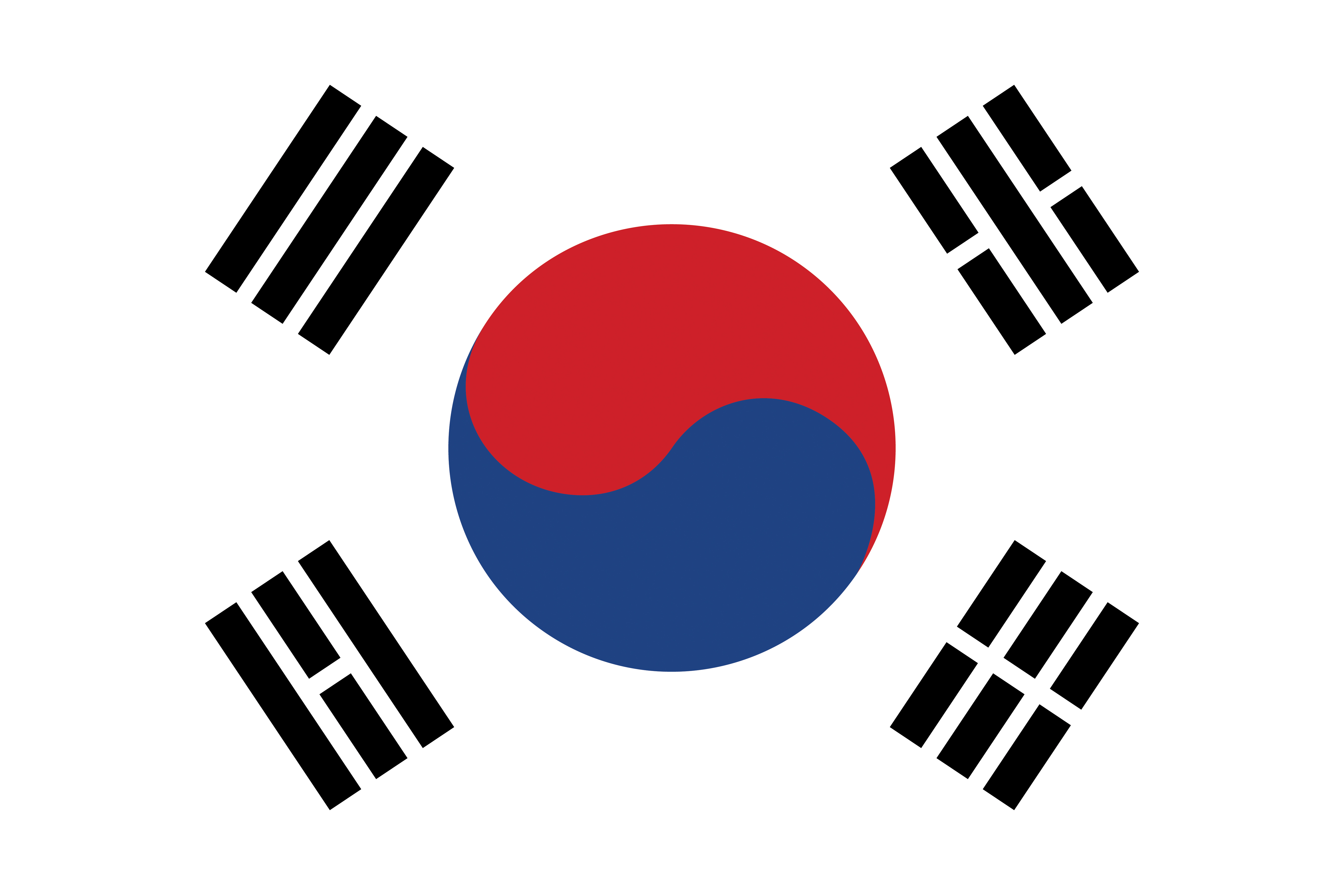South Korea flag is the national flag of South Korea, a country in eastern Asia. The flag features a circular emblem on a white background, with black symbols in each corner. The circular emblem, half red and half blue, represents the balance between complementary forces in nature, such as night and day, and death and life. In ancient Asian philosophies, these forces are called yin and yang. The Korean name for the emblem is the taegeuk, also spelled taeguk. South Koreans call their flag the Taegeukgi, also spelled Taegukki.

The flag’s white background stands for peace. The symbols in the corners are called trigrams, and each consists of three lines. They come from an ancient Chinese book of philosophy called the I Ching. The trigrams represent four traditional elements—heaven, water, earth, and fire. Together, they express movement and harmony. The trigrams also represent the four cardinal directions and the four seasons.
South Korea’s official name is the Republic of Korea. The nation covers the southern half of the Korean Peninsula, which extends south from northeastern China. The country of North Korea occupies the northern half of the peninsula. For hundreds of years, Korea was one country. In 1882, the Koreans adopted a national flag to use when dealing with other nations. But in 1910, Japan took control of Korea and outlawed the Korean flag.
After Japan’s defeat in World War II (1939-1945), Korea became divided, as Communists gained control of the north. In 1948, the south and the north formed separate governments. The Communist government of North Korea adopted a new flag. South Korea kept the original Korean flag. In 1950, the South Koreans changed the flag slightly by shifting the positions of the trigrams.
